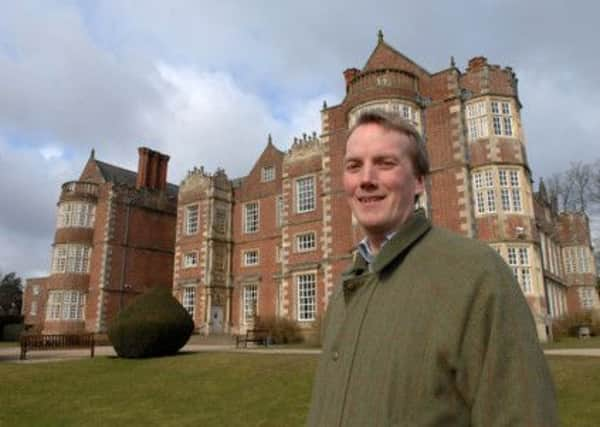Haunting memories of a truly great hall


One of de Stuteville’s daughters, Agness, may have been responsible for the name Burton Agnes, which was first recorded in a deed from c. 1175.
The Manor House still stands today, encased in uninspiring brick, an alteration dating from the 17th century, when it was used as a laundry, while a lower chamber survives in all its gloomy Norman splendour. An upper room is thought to have been the great hall, developed in the mid-fifteenth century. Of course the Manor House would have been much larger than surviving fragments suggest.
Advertisement
Hide AdAdvertisement
Hide AdSurrounded by woodland, the present red brick Burton Agnes Hall, with stone plinth, coigns, mullions and ornaments, was built during the Elizabethan period – marked by stability, prosperity and growing confidence. It was also a time where landowners, grown rich on the flourishing agriculture, built sumptuous houses to show off their wealth and power.
Sir Henry Griffith, born 1558, was behind the new Burton Agnes Hall scheme.
His earlier ancestors lived for a period in de Stuteville’s twelfth century manor house, having re-roofed it and made it habitable.
Descending from a Welsh family, who had emigrated to Staffordshire in the thirteenth century, Sir Henry was appointed to the Council of the North, based in York, in 1599. Although he had already started building work on a new home in the Midlands, this was superseded by a hall strategically sited at Burton Agnes and erected during the first decade of the 17th century.
Advertisement
Hide AdAdvertisement
Hide AdThe design work is attributed to Robert Smithson. Smithson was trained as a stonemason, and by the 1560s was travelling England leading his own team of masons. His style is eclectic with Renaissance, Flemish and English Gothic traces.
Master Mason to Queen Elizabeth, Smithson was stonemason for the Longleat House and later designed Hardwick Wollaton halls.
Burton Agnes Hall is the only Smithson house where the plan still exists. Noted architectural historian Mark Girouard in his definitive book on the Smithson family of architects, called it a “splendid and glittering composition”. Simon Jenkins, author of England’s Thousand Best Houses, said it was “the perfect English house” and one of the twenty best, alongside Windsor Castle, Buckingham Palace and Chatsworth House.
Carefully watching the new Burton Agnes house being built was Katherine (Ann) Griffith, the youngest of Sir Henry’s three daughters, who apparently thought it would be the most beautiful house ever built. Around the time of completion, she ventured out alone one afternoon to visit Harpham, about a mile away, accompanied by her dog. At dusk she set off home but near St John’s Well was clubbed and robbed by criminals.
Advertisement
Hide AdAdvertisement
Hide AdBrought home to Burton Agnes badly hurt, Ann was sometimes delirious, she told her sisters she would never rest unless part of her could remain in “our beautiful home as long as it shall last”. She made them make a gruesome promise: when she was dead her head should be severed and preserved in the Hall forever. To pacify her, both sisters, although horrified, agreed, but on her death she was interred in the churchyard.
Because the promise was broken, it is said she haunted the new house, scaring the everybody. Her sisters then opened the grave and brought her skull into the house. As long as the skull remained undisturbed, there were seemingly no paranormal events.
On one occasion the skull was thrown away, another time it was buried in the garden, and each time her ghost walked.
The house’s present occupant, Simon Cunliffe-Lister, states the skull is still in the property, built into one of the old walls, probably in the Great Hall.
Advertisement
Hide AdAdvertisement
Hide Ad“There is a letter in existence referring to the skull being hidden in the hall. We are happy to leave it undisturbed. It’s more about respect than fear, although even now, visitors to the hall have experienced bizarre things.
“We had sightings of a strange lady in the hall and sometimes you can smell lavender or violets in rooms no one has been in.”
Any reader interested in taking part in a ghost hunt at Burton Agnes Hall is advised to keep an eye on the website for details.